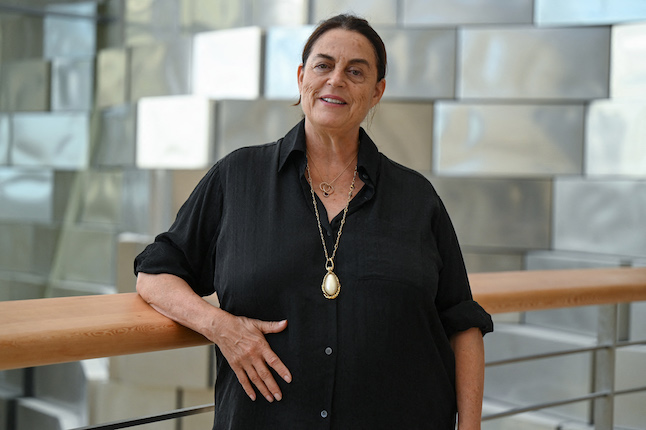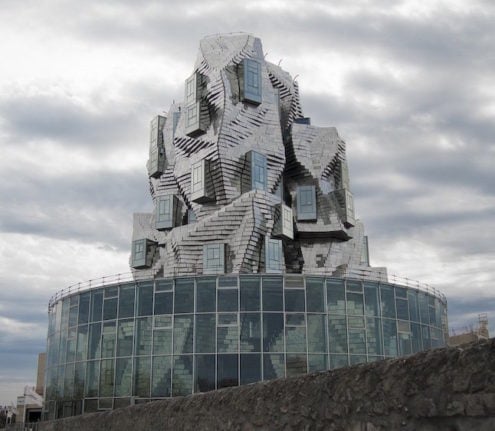The tower, which opens to the public on Saturday, is the flagship attraction of a new “creative campus” conceived by the Swiss Luma arts foundation that wants to offer artists a space to create, collaborate and showcase their work.
Gehry, the 92-year-old brain behind Bilbao’s Guggenheim museum and Los Angeles’ Walt Disney Concert Hall, wrapped 11,000 stainless steel panels around his tower above a huge glass round base.
It will house contemporary art exhibitions, a library, and offices, while the Luma Arles campus as a whole will host conferences and live performances.
From a distance, the structure reflects the changing lights of this town that inspired Van Gogh, capturing the whiteness of the limestone Alpilles mountain range nearby which glows a fierce orange when the sun sets.
Mustapha Bouhayati, the head of Luma Arles, says the town is no stranger to
imposing monuments; its ancient Roman arena and theatre have long drawn the
crowds.
The tower is just the latest addition, he says. “We’re building the heritage of tomorrow.”
Luma Arles spreads out over a huge former industrial wasteland.
Maja Hoffmann, a Swiss patron of the arts who created the foundation, says
the site took seven years to build and many more years to conceive.

Aside from the tower, Luma Arles also has exhibition and performance spaces in former industrial buildings, a phosphorescent skatepark created by South Korean artist Koo Jeong A and a sprawling public park conceived by Belgian landscape architect Bas Smets.
‘Arles chose me’
The wealthy great-granddaughter of a founder of Swiss drug giant Roche, Hoffmann has for years been involved in the world of contemporary art, like her grandmother before her.
A documentary producer and arts collector, she owns photos by Annie Leibovitz and Diane Arbus and says she hung out with Jean-Michel Basquiat in New York.
Her foundation’s stated aim is to promote artists and their work, with a special interest in environmental issues, human rights, education and culture.
She refuses to answer a question on how much the project in Arles cost. But as to why she chose the 53,000-strong town, Hoffmann responds: “I did not choose Arles, Arles chose me.”
She moved there as a baby when her father Luc Hoffmann, who co-founded WWF,
created a reserve to preserve the biodiversity of the Camargue, a region between the Mediterranean Sea and the Rhone river delta known for its pink flamingos.
The tower reflects that, with Camargue salt used as mural panels and the
delta’s algae as textile dye.
Hoffmann says she wants her project to attract more visitors in the winter, in a town where nearly a quarter of the population lives under the poverty line.
Some 190 people will be working at the Luma project over the summer, Bouhayati says, adding that Hoffman has created an “ecosystem for creation”.



 Please whitelist us to continue reading.
Please whitelist us to continue reading.
Member comments